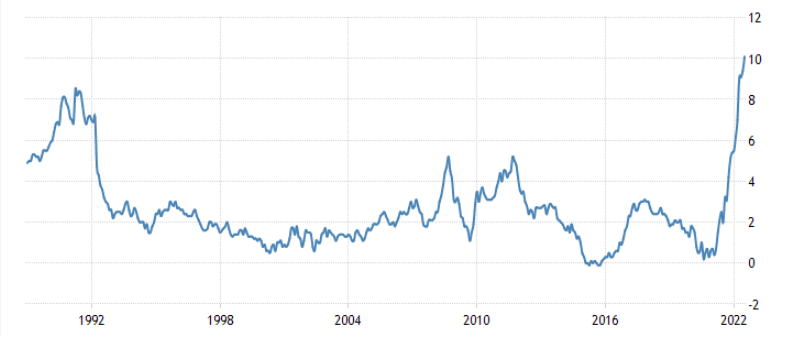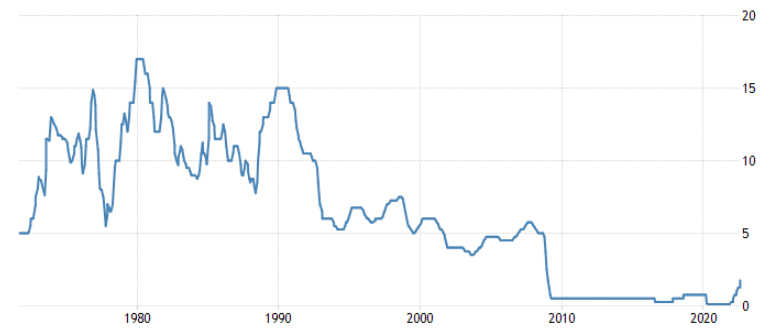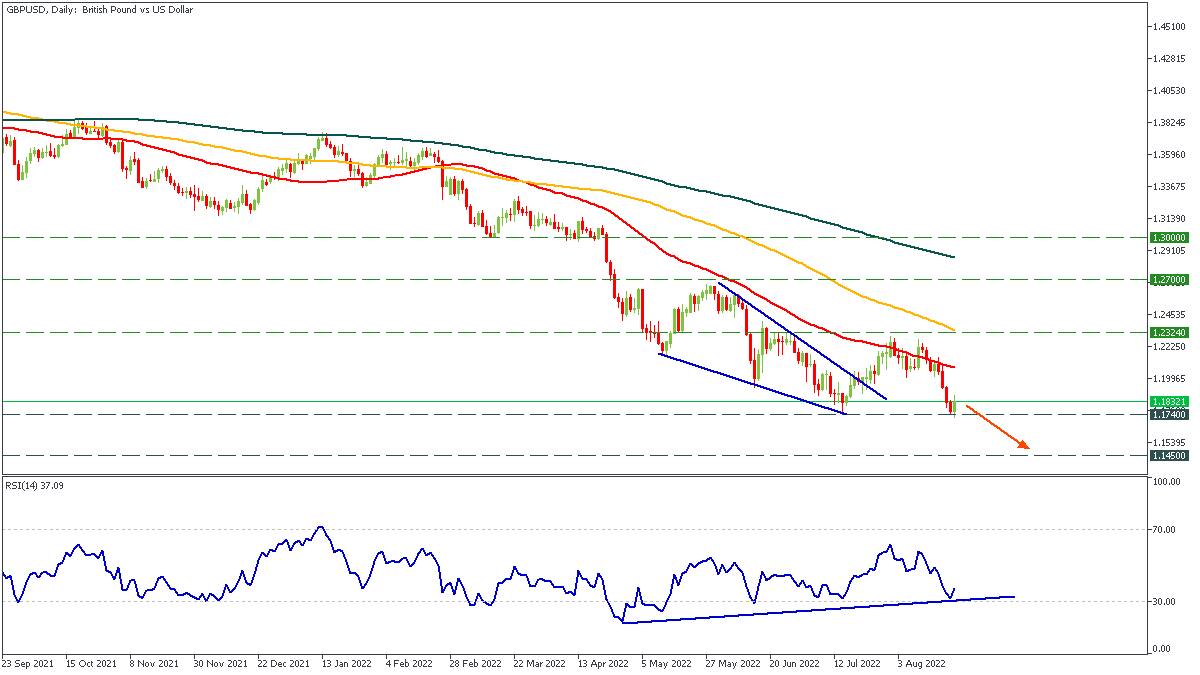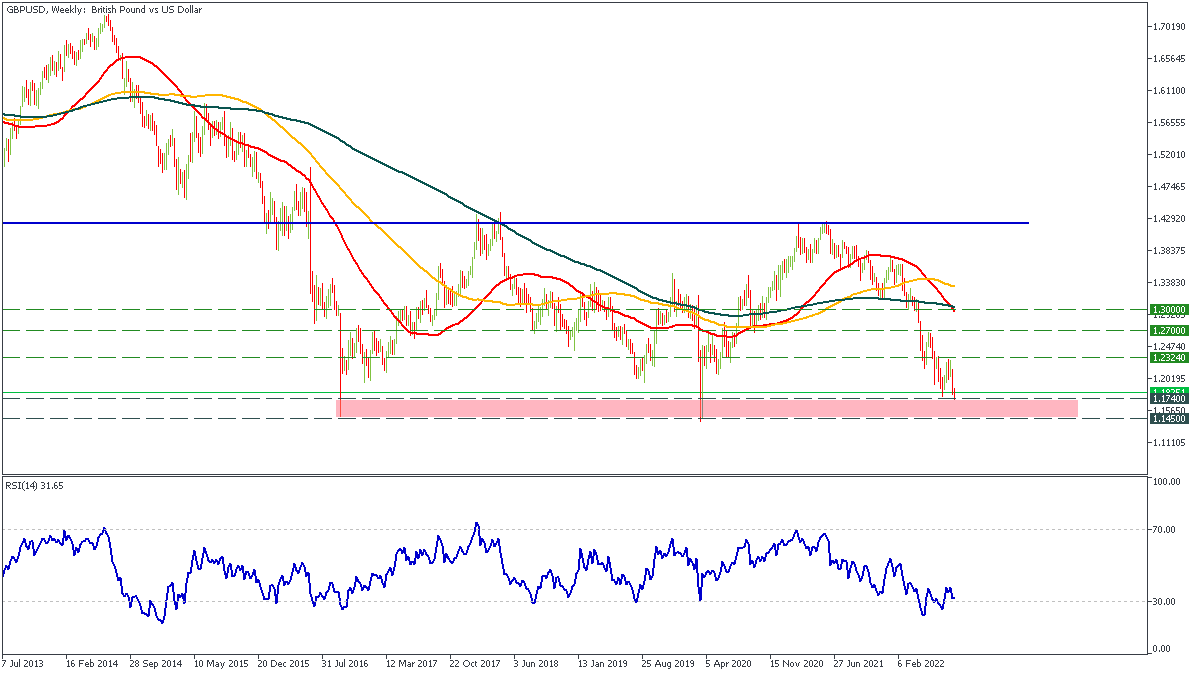This is what happens with GBP soon
The highest inflation in the UK doesn’t leave a chance for their currency to feel good. Hundreds of households in the country are in a very fragile condition, trying to allocate their funds between high food and even higher electricity costs. How deep can the pound fall? FBS analysts explained everything in this article.
Effect of the high UK inflation
The annual inflation rate in the UK increased to 10.1% in July of 2022 from 9.4% in the previous period and slightly above market forecasts of 9.8%. It was the highest reading since February 1982.

Source: tradingeconomics.com
Gas prices are rising at an unseen speed, putting the UK on a path to 18% inflation next year. It would be the highest rate among larger western economies, Citigroup report says. Bank of America and Goldman Sachs have a slightly more positive view of the next year’s inflation at 14-15%. Still, these numbers press on the country’s currency. The Bank of England (BOE), which has a long-term target set at 2%, will have to react.
Tory, one of the leading parties in the UK, is electing a new Prime Minister after Boris Johnson’s resignation in July. Liz Truss, one of the candidates to become a new Tory leader (and the next Prime Minister), is accusing the BOE of being too slow to increase interest rates to deal with rising inflation. However, we cannot agree with her completely.
We should take into account that BOE was one of the first major central banks to hike the interest rate from 0.10% to 0.25% in December 2021. Back then, the rate hikes were intended to slow down the economy after the rapid money printing because of Covid-19. Nobody could have imagined that geopolitical tensions would go to a completely new level two months later, followed by the rapid growth in commodities. On the other hand, with a 2% inflation target, the bank should have reacted much earlier because price growth exceeded 2% in the middle of 2021, much before the first hike.
Next actions of the BOE
The last rate hike took place on August 4 as the Bank of England raised the rate by 50 basis points. Combine it with the current inflation of 10% and the war in Ukraine that is unlikely to end in 2022, and you will get a terrifying outlook for Great Britain. In 1982, the UK interest rate was close to 15%. We suppose the situation may become the same this time, and the bank will become more hawkish as prices skyrocket.

Some relief will reach the UK in case of a relatively mild winter. A Downing Street spokesperson urged people not to panic over energy supplies. He said the UK has one of the world’s most diverse and reliable energy systems. If so, price growth may slow down significantly (because it’s supported mainly by energy costs), and the BOE wouldn’t need to be extremely aggressive in its decisions.
GBP outlook is a two-edged sword
Usually, a rate hike is a bullish factor for the currency, but this time it’s not so simple. The BOE failed to strengthen the GBP amid high inflation, and we may see a rise in the GBP only in two cases:
- GBPUSD may rise if the USD plunges. It may happen if Federal Reserve slows down rate hikes and implies a less hawkish policy.
- The BOE will surprise the market and make a bigger-than-expected hike (for example, 100 basis points instead of 50).
As for now, none of these scenarios seems likely, and with growing prices in the UK, the GBP will tend to decrease. In the GBPUSD pair, the double bottom pattern is trying to form. However, on the 1.1740 support breakout, the pair will reach 1.1450 in less than a month.
GBPUSD daily chart
Resistance: 1.2324, 1.2700, 1.3000
Support: 1.1740, 1.1450

The weekly timeframe is even more pessimistic, especially in case of the red zone breakout. A horizontal channel continuation pattern has been forming for the last five years. In case of a breakout, the movement will be massive, with possible, although long-term, targets at the parity level (1.0000).

Do you want to get updates Live? Subscribe to the @FBSAnalytics Telegram Channel where I post more daily trade ideas!